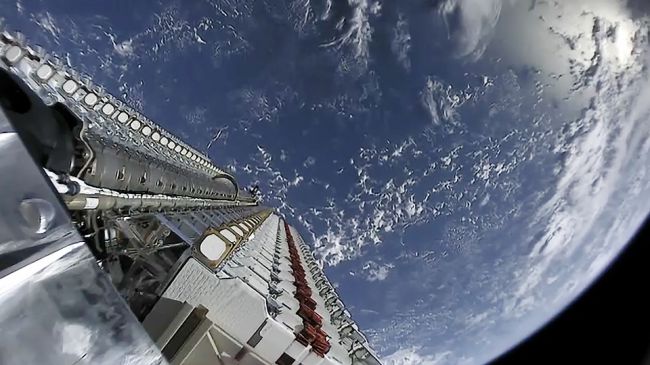SpaceX Starlink To Provide Global Coverage By September

SpaceX’s Starlink fleet of satellites is to deliver continuous global coverage by around September, its president has revealed
Starlink will deliver continuous global coverage by around September according to SpaceX president Gwynne Shotwel on Tuesday.
Elon Musk’s firm however will be required to seek out regulatory approvals in each given country for its service to be activated there, Reuters reported.
SpaceX has been busy launching hundreds of satellites into orbit over the past year. In May the firm revealed it has already received more than 500,000 orders for the satellite internet service.

Worldwide coverage
And Gwynne Shotwell this week revealed that SpaceX now had a total of 1,800 Starlink satellites, which is enough to provide global coverage.
“We’ve successfully deployed 1,800 or so satellites, and once all those satellites reach their operational orbit we will have continuous global coverage, so that should be like September timeframe,” Shotwell reportedly said in a video conference with Macquarie Group.
SpaceX needs regulatory approval before operating in a given country, she said.
At the moment, Starlink operates a beta service in 11 countries, Shotwell reportedly said, including the US, Australia, New Zealand, and parts of Europe.
In January 2021, Ofcom officially approved Space X Starlink satellite broadband service for use in the United Kingdom.
The Starlink connectivity service is priced at $99 a month, but the user also has to pay $499 upfront for the equipment needed to connect to the service.
This Starlink Kit reportedly includes a user terminal and Wi-Fi router to connect to the satellites.
Users can expect internet speeds of up to 209.2 MBps, which was the fastest speed recorded by a beta-test subscriber, Reuters reported.
This is fast but some way off the gigabit speeds now been touted by some service providers.
Eventual goal
SpaceX intends to place up to 12,000 satellites in orbit, with approximately 2,000 satellites launched per year.
It will eventually place up to 42,000 satellites into orbit by mid-2027.
The Starlink satellites are initially deployed at an altitude of 290km, before they manoeuvre up to 550km (342 miles) above the earth.
Its reach will be extensive, but there will be some limitations within cities.
Elon Musk has previously made clear that he sees the Starlink service as a way of funding SpaceX’s ambition to develop a spacecraft that can carry passengers to the moon, and eventually colonise Mars.
Rival networks
But Space X is not the only player in rolling out satellite-based Internet connectivity.
The other companies racing to construct satellite-based broadband networks include Jeff Bezos’ Blue Origin, which intends to deploy a 3,200-satellite network known as Project Kuiper.
Other players include Kepler, LeoSat and Telesat Canada.
But perhaps the most immediate challenge to SpaceX’s Starlink comes from British firm OneWeb, which is part owned by the British government, Bharti, and most recently the French satellite operator Eutelsat.